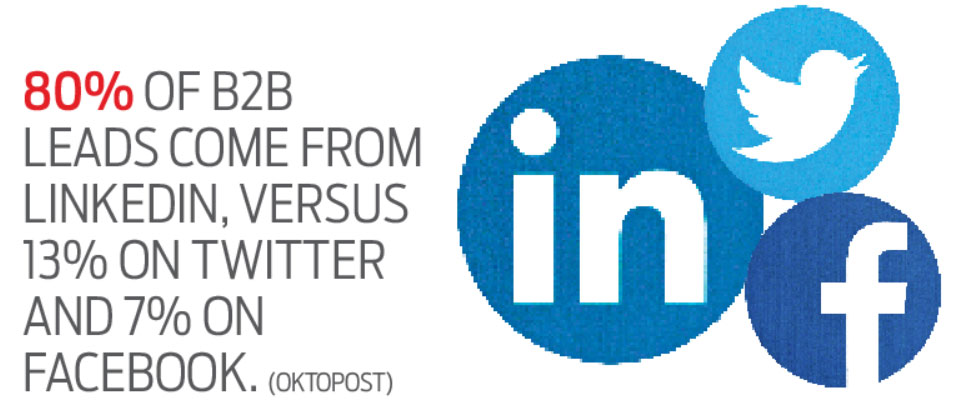Strategy June 29, 2018
How To Use LinkedIn to Reach Key People
Take these all-important steps to up your success rate in finding decision-makers on the leading business social media site.
1. Complete Your Profile
Before initiating any interaction with decision-makers, make sure you’re making a good impression with your profile. Those you request to connect with, even before you actively engage with them, will check your profile first to make sure you’re worth your salt. Have a professional headshot and cover photo, current title, professional summary and much more (see sidebar). Make sure it’s clear and up-to-date and everything is spelled correctly.
2. Use Sales Navigator
The free version of LinkedIn can only get you so far. If you’re serious about using LinkedIn to find the decision-maker, consider investing in LinkedIn Sales Navigator, which can help you search for companies and relevant leads. It also provides customized search results, depending on what you’re looking for, as well as CRM integration and real-time updates on your prospects, such as title and company changes.

3. Join LinkedIn Groups
LinkedIn Groups are a convenient way for professionals in similar industries to connect, share information, post job openings, network and establish themselves as industry experts. Join a few, and then contribute with thoughtful information. You can also use the custom invitation feature to send messages to other group members, inviting them to in-person networking events, webinars and the like.
4. Make Connections
Build your network of contacts at your target company so that when you go for the decision-maker, they can see you’re already connected with people they know and trust. That will increase the likelihood that they’ll engage with you. You might even be able to ask your new connections at the company to point you in the right direction when you’re still not sure who’s making the decision.
5. Read Into Their Profiles
Once you think you’ve found the person or group of people you’d like to pursue, check out their profile information. First, look at the time they’ve been with the company. If one person has been there two months and another three years, the latter most likely has more clout at the company. Also check out their Skills and Endorsements, which can clue you in as to how qualified they are to make a purchasing decision.
6. Find Common Interests
Don’t just focus on job titles. Check out your target’s interests, including community service they’re involved in and their education, to find commonalities that can warm up the conversation.
7. Reference Previous Interactions
When you do finally send a message to a connection, make sure to refer back to any interactions you’ve had, such as through LinkedIn Groups, or information they’ve posted that you liked. This can be a warm lead-in to ask for an in-person appointment.
Optimize Your LinkedIn Profile
While you’re scoping out people on LinkedIn, don’t forget about your own profile. Use this checklist to ensure it makes a good impression on potential prospects, and that it’s findable by people looking for your type of services.
- Professional Headshot
- Cover Photo
- Full Name
- Title and Company Name
- Location and Industry
- Professional Summary
- Activity
- Current Company
- Previous Companies
- Education
- Skills & Endorsements
- Recommendations
- Accomplishments
- Interests
